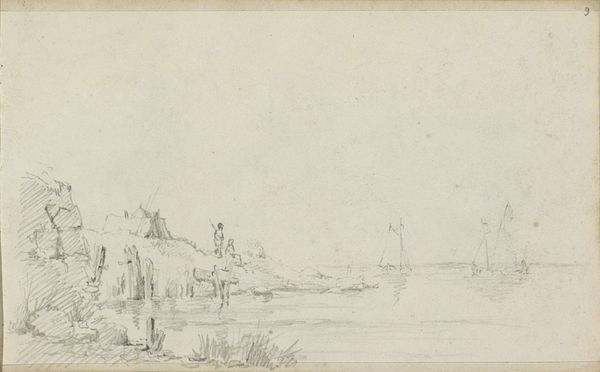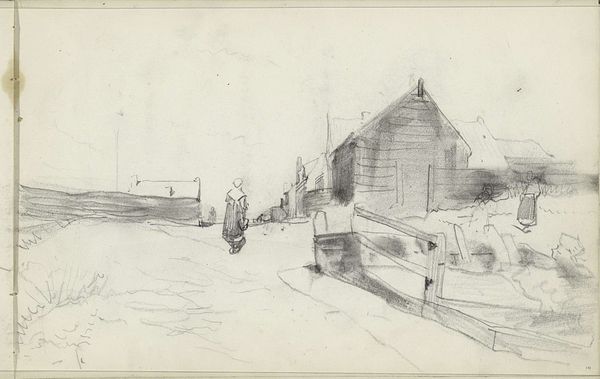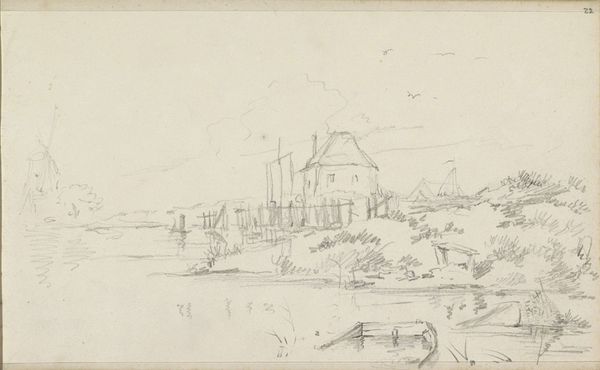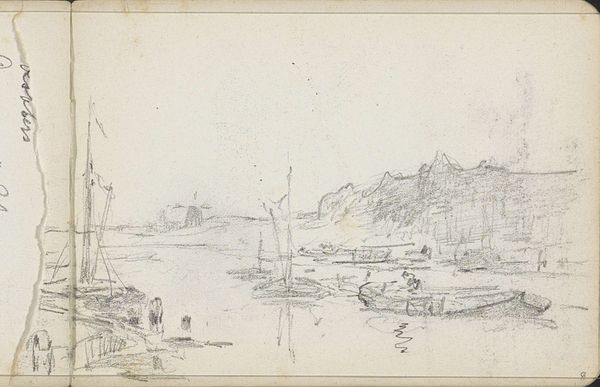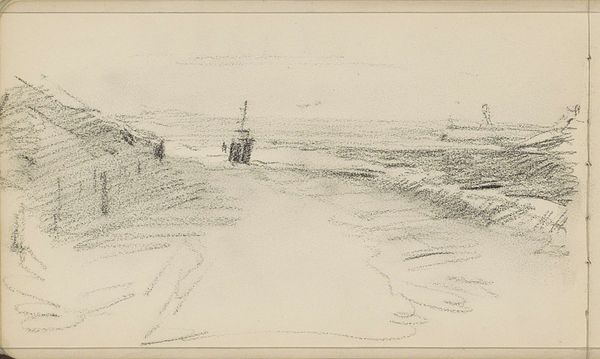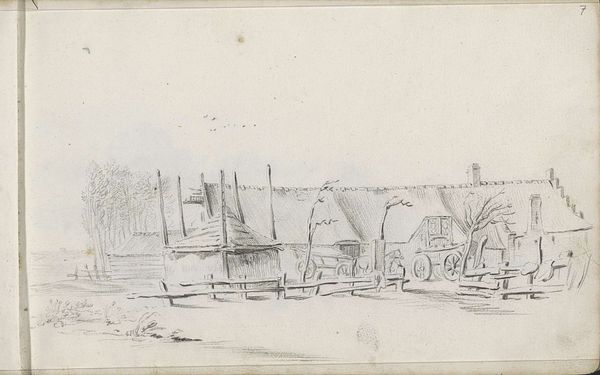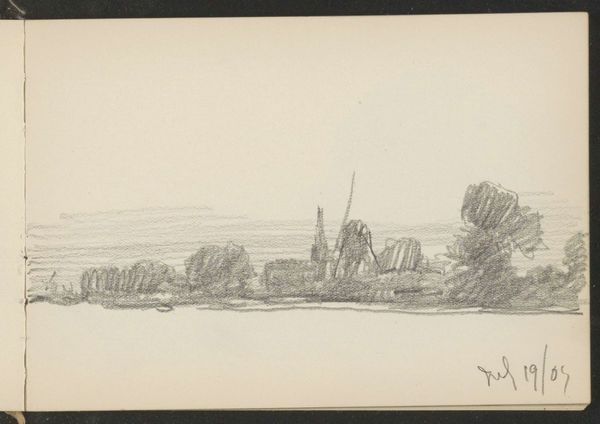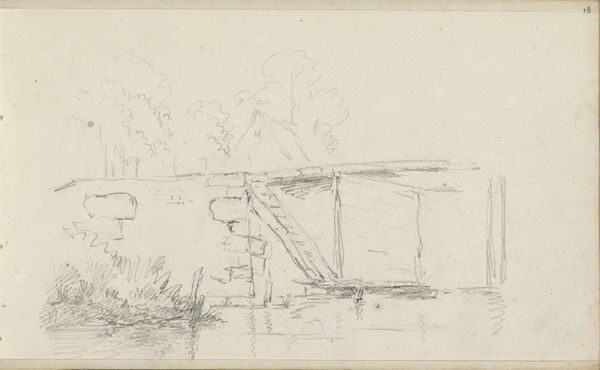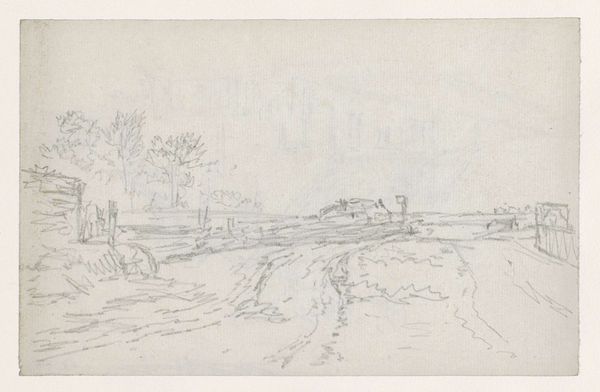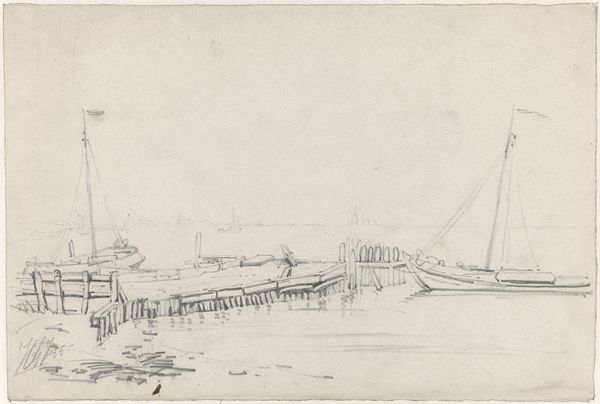
drawing, paper, pencil
#
drawing
#
landscape
#
river
#
paper
#
pencil
#
realism
Copyright: Rijks Museum: Open Domain
Curator: Before us is Petrus Johannes Schotel's drawing "Riviergezichten," created sometime between 1841 and 1865. It’s a pencil drawing on paper, currently held in the Rijksmuseum. Editor: My immediate reaction is its ethereal quality, a gentleness of light and composition, despite depicting very ordinary river scenes. The use of simple pencil strokes creates depth, giving a misty atmospheric feel to the sketches. Curator: Agreed. Schotel's mastery here is in illustrating everyday Dutch landscapes. The use of pencil on paper highlights the laborious process, sketching scenes available to a large segment of the population within close proximity to hubs of mercantile activity during the mid-19th century. Note how these scenes document industrial tools like windmills, connecting human labor with environmental forces, as if capturing fleeting moments in an ever-changing landscape due to increased trade. Editor: True, but I'm more struck by the aesthetic choices. Observe how the sketches play with positive and negative space; how light touches specific elements, making them pop out? The rough yet precise marks give a sense of form without overly defining every line and shape, while balancing darkness and light expertly. This combination captures a romantic quality through simple geometric structure in pencil form—essentially emphasizing beauty inherent within our own landscape. Curator: However, isn't it crucial to also think about the intended viewer? The increased circulation of artistic creations made these sketches accessible. The ability of individuals from various socio-economic backgrounds gaining access provides opportunities for collective recognition. Editor: Sure, social access is worth considering. Though, the success of this image rests heavily upon skillful design where simple geometry combines elegance creating an enduring fascination transcending any specific period. Curator: Perhaps. Regardless, these considerations only add greater layers while understanding historical significance tied up into “Riviergezichten”. Thank you for accompanying me along. Editor: My pleasure; let us now approach this artwork via new perspectives.
Comments
No comments
Be the first to comment and join the conversation on the ultimate creative platform.
